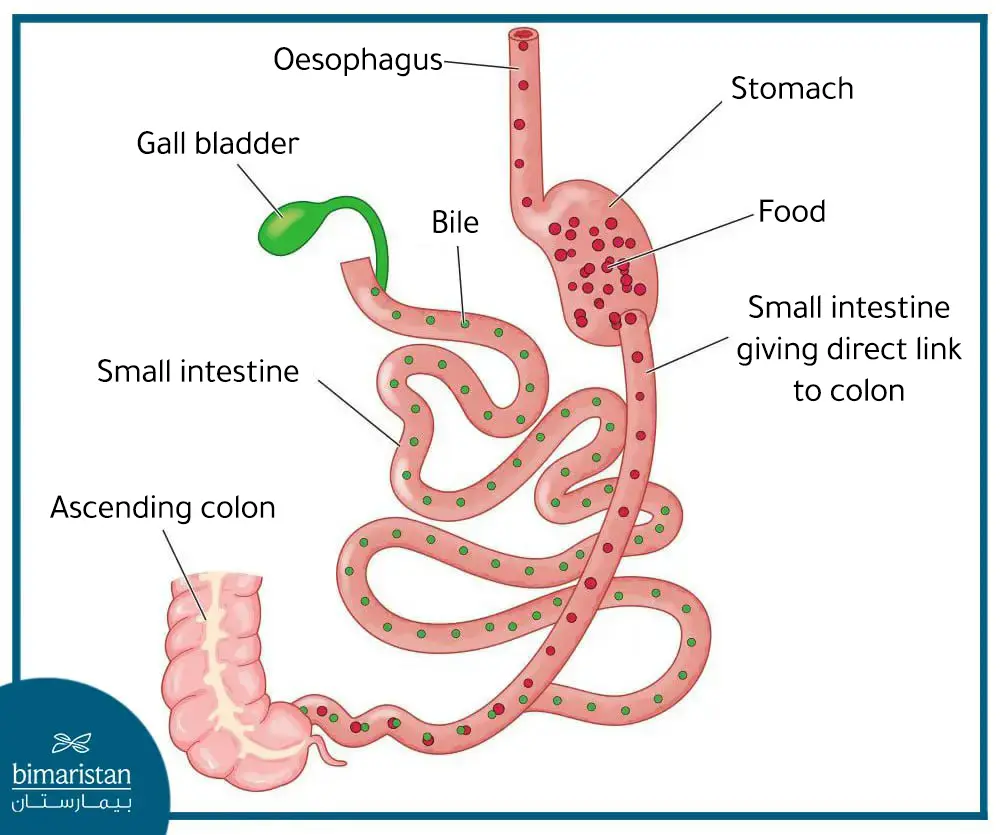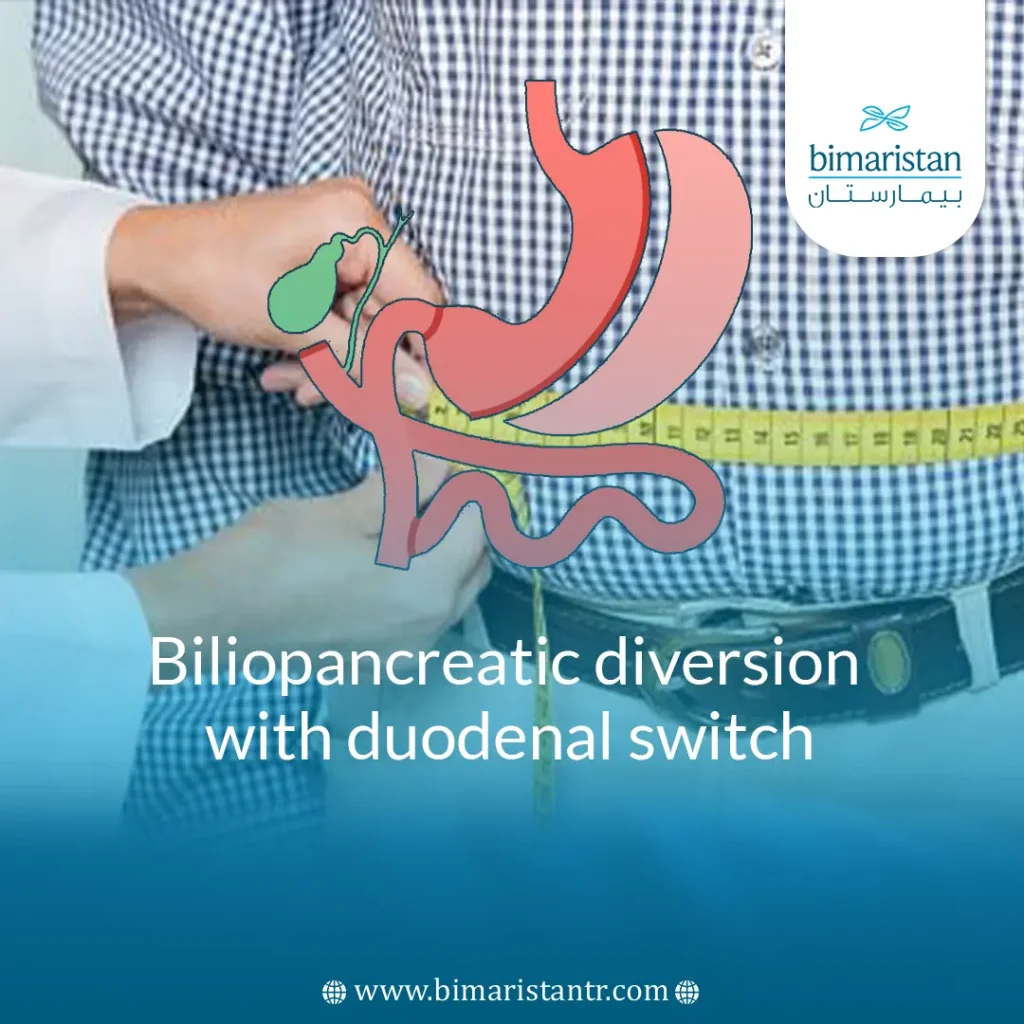Biliopancreatic diversion with duodenal switch (BPD/DS) is a highly effective surgical weight loss procedure in Turkey.
There are various surgical options available in Turkey to treat obesity, but the BPD-DS procedure is considered one of the most effective procedures for weight loss. It has shown remarkable outcomes in weight loss. The BPD-DS technique has proven to be successful in reducing more than 70% of excess weight in obese patients, making it a superior weight loss surgery as compared to other procedures such as gastric sleeve or gastric banding.
While the BPD-DS procedure is effective in treating obesity, it comes with a higher risk of complications compared to other weight loss surgeries, which has made it less popular in recent years. However, it remains a viable option for some patients, particularly those with diabetes. Keep reading if you want to know more about this procedure, such as its prerequisites and estimated cost in Turkey.
What is Biliopancreatic diversion with duodenal switch?
The BPD-DS procedure involves three primary steps. First, the surgeon cuts and reduces the size of the stomach, removing approximately 80% of its average size while preserving the final section of the stomach (the pylorus), through which food passes to the small intestine. This step aims to reduce the amount of food a patient can eat in one meal and make him feel full faster, resulting in gradual weight loss over time.
The surgeon then moves to the next step, which is connecting the upper part of the small intestine (duodenum) with the lower part (terminal ileum) and removing the section of the intestine between them. As a result, the body’s ability to absorb nutrients and calories is reduced, which leads to gradual weight loss.
The surgeon comes to the last step, which is connecting the separated section of the intestines with the end of the jejunum. This helps to divert the bile produced by the liver into the ileum instead of the duodenum. This change in the bile flow causes fats and food malabsorption, ultimately leading to weight loss.

Who qualifies for the BPD-DS surgery?
To undergo the BPD-DS procedure, it’s essential to have a skilled surgeon who can carry out the surgery. However, not everyone who has severe obesity is a suitable candidate for this procedure. Below are the conditions that one must meet to be eligible for the surgery:
- Body mass index (BMI) is greater than 50
- The presence of complications from severe obesity, such as diabetes or high blood pressure with a BMI greater than 40
- The patient is capable of making a healthy diet after the procedure
- No health problems, such as heart disease, make the BPD-DS procedure dangerous for the patient.
Diabetic patients particularly favor the BPD-DS surgery due to its effective results in weight loss. On average, weight loss after this surgery is highest among other obesity surgeries. You can read more about obesity surgeries in Turkey.
Benefits of the BPD-DS surgery in Turkey
The BPD-DS procedure, also known as biliopancreatic diversion with duodenal switch, is a weight loss surgery that achieves weight loss through two methods. Firstly, it restricts the stomach size through sleeve gastrectomy. Secondly, it causes malabsorption by changing the route of the intestines. Due to its ability to combine both methods in a single procedure, it is considered more effective in achieving weight loss than gastric sleeve surgery
According to studies, biliopancreatic diversion with a duodenal switch can lead to an average weight loss of 70% of excess weight.
How to prepare for biliopancreatic diversion with duodenal switch
Once you have scheduled the surgical procedure, some routine tests will be conducted to ensure that you are fully prepared for the surgery; the laboratory tests will include checking for sodium, potassium, and other tests. The doctor will also ask you about the medications and dietary supplements you are taking and may ask you to make some adjustments or stop taking some medicines before your surgery.
A nutrition specialist will create a dietary program for you before your surgery. Losing some weight before the procedure ensures better results. It is important to avoid eating and drinking for 12 hours before the scheduled surgery. Additionally, it is recommended to discuss the dietary regimen for the post-surgical stage. This will help the patient understand the procedure’s requirements and conditions for success.
The patient is put under general anesthesia before surgery. The procedure can be performed laparoscopically or through traditional open surgery, with a preference for the laparoscope due to its lower risk.
After the procedure and once you wake up from anesthesia, you can slowly start drinking fluids and eating light foods. It’s important to avoid solid foods at this stage, as your stomach and intestines need to recover well. The specialist will then determine a dietary plan for you to follow to achieve satisfactory results.
It is important to follow the medical team’s advice during the post-surgical stage of surgery. Taking nutritional supplements that contain essential minerals and vitamins, like calcium and vitamin B12, is necessary to make up for the poor absorption that the procedure may cause. This helps prevent any deficiencies of these essential elements in the body.
It is important to have regular check-ups with your doctor after the procedure to evaluate the results and conduct tests to ensure that the patient is getting enough nutrients. During these check-ups, weight will be measured to monitor the procedure’s results.
According to studies, most patients have lost approximately 60-80% of their excess weight within two years. Better results can be expected quickly with the patient’s commitment to a healthy lifestyle.
Risks of BPD/DS surgery
BPD/DS surgery is less commonly used nowadays due to the higher risks of side effects compared to other obesity treatments, such as gastric botox injections or gastric balloon insertion. This procedure may result in severe bleeding, infection, anesthesia-related problems, blood clot formation, and hernia.
The use of endoscopy to perform the procedure is associated with fewer complications than open surgery, in addition to the surgeon’s experience, significantly reducing potential risks. The Bimaristan Medical Center provides the best-specialized surgeons in Turkey for obesity treatment. You can contact us for more details.
Biliopancreatic diversion with duodenal switch cost in turkey
The cost of BPD-DS surgery in Turkey ranges from $3,500 to $5,500, which is much lower compared to other countries. Turkey is well known for providing the best medical services at lower treatment costs, attracting more than 700,000 visitors annually who come in search of treatment.
If you are considering traveling to Turkey for medical treatment, our medical team is here to help. Our team of doctors can assist you in selecting a center that offers the services you require at an affordable price. Additionally, they provide free consultations for patients seeking treatment.
Finally, Biliopancreatic diversion with duodenal switch (BPD-DS) is a surgical procedure that is used to treat severe obesity. This surgery can help patients achieve rapid and effective weight loss, but it is more risky than other obesity surgeries. It is usually performed in Turkey on obese diabetic patients by experienced surgeons at a low cost.
Sources:
